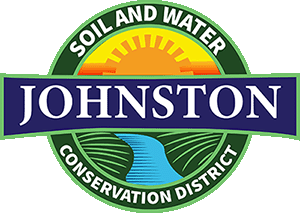
Soil and Water Conservation
Johnston County, North Carolina

Johnston County, North Carolina
Erosion poses a problem for shore lands by removing soils and sediment that support plant and animal life.Erosion can strip away important sediment layers and change the habitat's ability to support life.Extreme erosion can create stream flows that drain coastal wetland areas.
Dredging, filling, and draining of wetlands has destroyed hundreds of thousands of acres of coastal habitat.Also, dredged materials from navigation channels are often deposited alongside streams in wetland areas. For many years, it was thought good land practice to improve wetland "wastelands" by filling them in or draining them for mosquito control.
Wetlands are now protected by Section 404 of The Clean Water Act. Under this law, the discharge of dredged or fill materials into the waters of the U.S. requires a permit from the Army Corps of Engineers.This has prevented the loss of may wetlands, however, wetland loss and degradation continue to be a significant environmental concern.
Red tide is a natural phenomenon brought on by too many nutrients in the water which can cause uncontrolled growth of microscopic organism or type of plankton called a dinoflagellate. These organisms can multiply to the point where the water actually looks red. The organisms contaminate shellfish, making them unsafe for human consumption.Red tide can also cause fish kills and damage vegetation.
Non-point source pollution is a problem for bays as well as any other waterway, but here its consequences can be more severe.Since bays are typically shallow, non-point source sediment pollution can quickly fill and clog waterways and wetland areas.Sediment can also cause temperature changes that can reduce oxygen levels and kill marine life.
Nutrient pollution from farmlands can also create havoc in bays.Algal blooms from nonpoint source pollution can have similar effects of reducing oxygen levels and killing existing life. And toxic pollution can quickly settle into shallow bay waters and infiltrate productive fishing and spawning beds, killing or contaminating fish and plant life.
Coastal development has been and continues to be a major threat to wetlands.Coastal property has high real estate value, and developers find it difficult to preserve wetland areas when faced with profit potential from private wetland areas.And even if wetlands aren't destroyed during development, the additional pollution from development can disrupt the delicate environmental balance of wetlands, changing habitats forever. The nation's largest estuary, Chesapeake Bay, suffers many environmental problems as a result of extensive development within its watershed.
(Information provided by : Soil and Water Conservation)
Page last updated: July 22, 2022